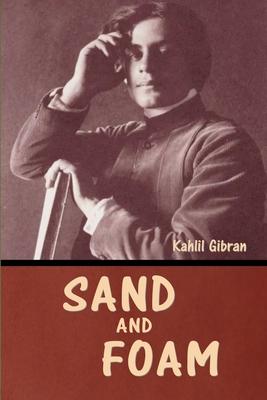CONTENTS
Sand and Foam
The Madman: His Parables and Poems
The Forerunner: His Parables and Poems
God's Fool
Love
The King-Hermit
The Lion's Daughter
Tyranny
The Saint
The Plutocrat
The Greater Self
War and the Small Nations
Critics
Poets
The Weather-cock
The King of Aradus
Out of My Deeper Heart
Dynasties
Knowledge and Half-Knowledge
"Said a Sheet of Snow-White Paper...."
The Scholar and the Poet
Values
Other Seas
Repentance
The Dying Man and the Vulture
Beyond My Solitude
The Last Watch
About the Author
Gibran Khalil Gibran (January 6, 1883 - April 10, 1931), usually referred to in English as Kahlil Gibran was a Lebanese-American writer, poet and visual artist, also considered a philosopher although he himself rejected the title. He is best known as the author of The Prophet, which was first published in the United States in 1923 and has since become one of the best-selling books of all time, having been translated into more than 100 languages.
Born in a village of the Ottoman-ruled Mount Lebanon Mutasarrifate to a Maronite family, the young Gibran immigrated with his mother and siblings to the United States in 1895. As his mother worked as a seamstress, he was enrolled at a school in Boston, where his creative abilities were quickly noticed by a teacher who presented him to photographer and publisher F. Holland Day. Gibran was sent back to his native land by his family at the age of fifteen to enroll at the Collge de la Sagesse in Beirut. Returning to Boston upon his youngest sister's death in 1902, he lost his older half-brother and his mother the following year, seemingly relying afterwards on his remaining sister's income from her work at a dressmaker's shop for some time.
In 1904, Gibran's drawings were displayed for the first time at Day's studio in Boston, and his first book in Arabic was published in 1905 in New York City. With the financial help of a newly met benefactress, Mary Haskell, Gibran studied art in Paris from 1908 to 1910. While there, he came in contact with Syrian political thinkers promoting rebellion in Ottoman Syria after the Young Turk Revolution; some of Gibran's writings, voicing the same ideas as well as anti-clericalism, would eventually be banned by the Ottoman authorities. In 1911, Gibran settled in New York, where his first book in English, The Madman, would be published by Alfred A. Knopf in 1918, with writing of The Prophet or The Earth Gods also underway. His visual artwork was shown at Montross Gallery in 1914, and at the galleries of M. Knoedler & Co. in 1917. He had also been corresponding remarkably with May Ziadeh since 1912. In 1920, Gibran re-founded the Pen League with fellow Mahjari poets. By the time of his death at the age of 48 from cirrhosis and incipient tuberculosis in one lung, he had achieved literary fame on "both sides of the Atlantic Ocean," and The Prophet had already been translated into German and French. His body was transferred to his birth village of Bsharri (in present-day Lebanon), to which he had bequeathed all future royalties on his books, and where a museum dedicated to his works now stands... (wikipedia.org)
